Balenciaga Paris Eau de Parfum (2010): The Story of Balenciaga in 3 Acts or The Pure White Violets of the Future {Fragrance Review} {Violet Notebook}
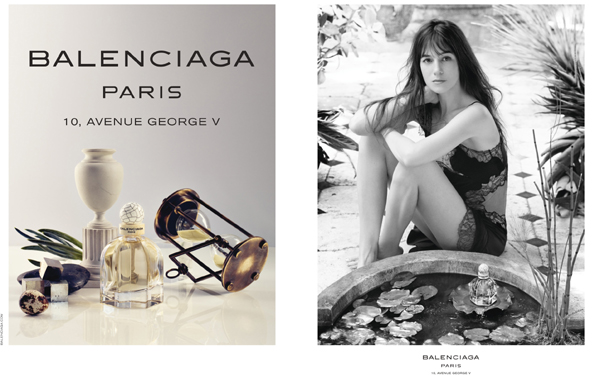 Balenciaga Paris is the new perfume of the renascent perfume house of Balenciaga, a project which was first announced in October 2008. The scent was launched for the press in December 2009 and released this spring 2010. Developed under the auspices of Balenciaga artistic director Nicolas Ghesquière (since 1998) and inspired by muse Charlotte Gainsbourg (in part), it would merit a more fashion-oriented report on it, but I will focus for this time on the olfactory aspects of the perfume composed by nose Olivier Polge.
Balenciaga Paris is the new perfume of the renascent perfume house of Balenciaga, a project which was first announced in October 2008. The scent was launched for the press in December 2009 and released this spring 2010. Developed under the auspices of Balenciaga artistic director Nicolas Ghesquière (since 1998) and inspired by muse Charlotte Gainsbourg (in part), it would merit a more fashion-oriented report on it, but I will focus for this time on the olfactory aspects of the perfume composed by nose Olivier Polge.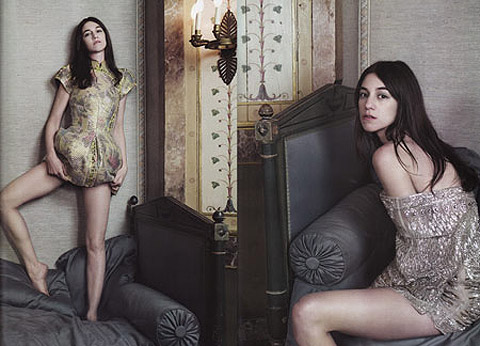
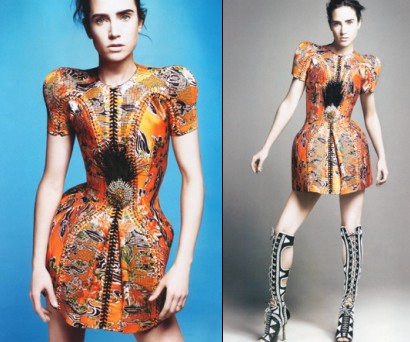
The flacon nevertheless is a direct reflection of the cocoon dresses of Ghesquière which was once famously sported by American actress Jennifer Connolly. Rumor has it that she might have become the face of the new fragrance but for Ghesquière who insisted on having Charlotte Gainsbourg as its incarnation. The latter, a friend, was glad as she had secretly been wishing for it. By making this less commercial and less global choice, Balenciaga is accentuating the French context of the brand, its anchoring in Paris as a fashion capital natural to the essence of Balenciaga, founded by Spaniard Cristobal Balenciaga. This association came by through style affinities and personal ones rather than perfume connection since the French actress herself declared recently that it is the first perfume that she has ever worn and that it took her a while to entrust it to her skin. Gainsbourg is said to have had the last say between two final iterations favored by Ghesquière.
There were only four perfumes developed under the tenure of Cristobal Balenciaga before the couturier closed his fashion house in 1968 although many more were to follow until 2000 as licensed perfumes. The four original Balenciaga perfumes are Le Dix (1947), La Fuite des Heures (1949), Quadrille (1955) and Eau de Balenciaga for Men, his first masculine fragrance (1962).
Balenciaga Paris is an interesting exercise in historicized branding for which perfumer Olivier Polge played the part of court portraitist while finding enough room to add his own interpretation especially in the final evolution and meaning of the perfume.
The eau de parfum is in the end a very luminous, crystalline composition which seems to have wanted to capture only the white part of the light found in chypre fragrances and to have painted violets habitually seen as purple as the rarer kind of white violet....
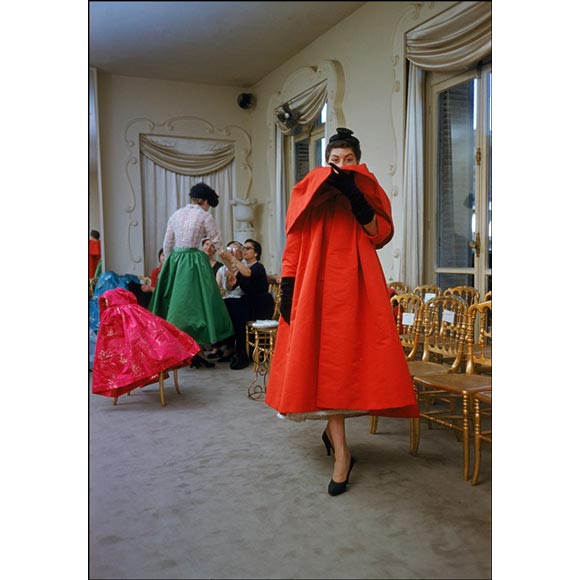 Balenciaga salon in 1954 by Mark Shaw
Balenciaga salon in 1954 by Mark ShawAct 1
A Nod to the Origins: Le Dix
The head notes are fresh, offering a verdant opening of violet leaves and flowers. As the scent unfolds so does the meaning of this introductory act: it pays homage to the great classic of the Balenciaga perfume house, Le Dix, which used to be one of the loveliest violet/iris perfumes available. It is a fresh take on Le Dix, literally and metaphorically speaking. Never did Le Dix smell so leafy and brisk although it would have smelled as spring-like and dewy.
The extrait or pure parfum of Le Dix was always a big cut above the eau de toilette in one of those cases where one cannot be satisfactorily substituted for the other. I am myself guilty of more plebeian tastes for Arpège by Lanvin for instance which always smelled best for/on me in its lighter incarnation. But where Le Dix is concerned, no hesitation: the extrait and only the extrait, if you can find a vintage version, is the way to experience the delicate and elegant aldehydic iris-violet composition signed by perfumer Francis Fabron in 1947 and which was inspired by who else but Chanel No.5 (I have to say "who" rather than "what". Perfumes have souls).
I discover next with interest that perfumer Olivier Polge further chiseled out and reinforced this affiliation in his new composition.
It also made me realize that I had probably smelled his perfume on a person on the street in a moment of olfactory shock when I got a haunting impression of it, perhaps by mere accident and through an association with a certain atmospheric ambience before actually testing it out of the bottle.
Act 2
An Homage to Classical Haute Couture Elegance
What is the scent of haute couture, you might ask? One way to answer this question is to resort to aldehydes. It may literally not be the most authentic olfactory seal of a fashion house, but in terms of semiotics it is, thanks to the identification with Chanel No5. At Chanel's, rue Cambon at least, it did smell of the No. 5, which used to be sprayed into the premises each day before La Grande Mademoiselle went to work. And as stated above, perfumer Francis Fabron in his days decided to compose an aldehydic homage to No.5 when Balenciaga wanted to launch their debut fragrance.
Balenciaga Paris, little by little evolves into a very retro aldehydic perfume à la Blue Grass (1935) by Elizabeth Arden due to its green note, with a dominant of the Aldehyde C12 MNA material which makes up the aldehydic component of No.5.
I remember a woman in heavy furs, her eyes made up like that of a retired ballerina with a straight eye-liner stroke under her eyes to make them look wider as if for an opera house audience and whom I passed by two weeks ago or so, who left a haunting trail as if from another era. I now think that she might have simply been wearing the new Balenciaga Paris. Her scent puzzled me then and I kept thinking about it as together with her appearance it projected something like the impression of a fossilized sillage and she was like a monument from the past able to walk and breathe.
When I walked past her and looked at her catching this unusually retro aldehydic sillage, it struck me how well it matched her slow-moving pace - although she was not by all means a dodderer - her mink coat, the impression that she had been enshrined alive in an olfactory time capsule. The old-school vieille France atmosphere of her surroundings reinforced this impression that she must be living off an ancient stash of perfume or that a neighborhood perfumery kept in stock a rare discontinued fragrance impossible to find elsewhere. I kept thinking about her out-of-time sillage afterwards as I wondered where that unusual and arresting aldehydic harshness might come from. It became her very well by the way.
The perfume reminded me of a vintage Chanel No. 5, and I hypothesized, might be the discontinued eau de cologne version as the aldehydes were particularly heavily dosed. Then, smelling Sweet Honesty by Avon, I thought this could also approximate it. Finally fishing out my bottle of Blue Grass, it was the closest I could find to this strange, reverse-the-clock reference from the past.
As I smell again the heart of the new Balenciaga Paris I think it might be it. Olivier Polge has recreated an aldehydic core which feels like an incursion into the past, the scent of an evening satin purse with a perfumed handkerchief in it. The perfume has that mustard-y, horseradish-like harshness of old-school aldehydes and Aldehyde C12 MNA in particular. Or it might be that that immortal Parisian lady insists on importing Blue Grass from the United States.
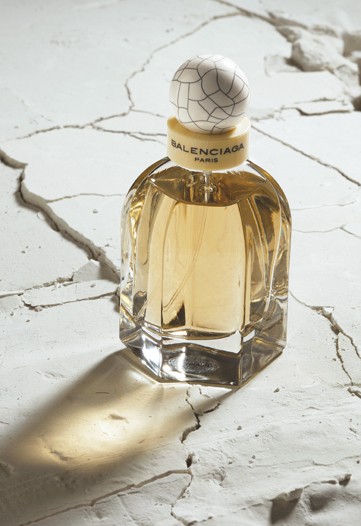
Act 3
The New Balenciaga: Crystal-Clear Violets
After these two first acts which linger on the past of Balenciaga, the third act turns towards the future and evokes it like a clean slate of possibilities.
The antiquarian aldehydic aspect of the perfume is prolonged into some additional tonalities which are in turn a bit banal (a rather ubiquitous synthetic ambergris note these days), unsurprising yet a little surprising still in this context note (fruity and fresh Melonal), and especially a very round, pleasant crystalline note of white transparent amber which corresponds to my impression of Ethylene Brassylate for its transparent ambery note.
There is a hint of camphor wood-like aroma, a subdued medicinal Tiger-Balm like accord but very discreet, further softened by a doughy iris. Combined they are a bit strange, this said in a positive manner.
The perfume blends finally into a tart, crystal-clear, round and warm amber which melds well with the skin. The floralcy is not only about violets, but with a classic touch of rose-and-cedar and iris. The carnation is very downplayed. It manages to evoke a forest-y underbrush thanks to patchouli and violet leaves. Despite a few fleeting trite nuances, Balenciaga Paris finally settles into a luminous, sensation-renewing violet perfume seeking purity and white light. I find the association of amber-y roundness, transparent whiteness, warmth and intense purity very compelling.
The third act is that part of the scent which for me pays homage to Nicolas Ghesquière' vision for Balenciaga, the stylist's futuristic leanings. Here the violet accord becomes metallic, structured and angular, clean and whited-out almost like a daytime oniric vision of an immense glass and metal structure. I think for conceptual reference of Dans Tes Bras by Frederic Malle for this dose of alien violet, for this idea that the most romantic of little flowers from the Victorian era could still smell "relevant" (who cares really? But you know what I mean) and even bear the mark of an aesthetic of the future which is sensed, guessed at, but not completely conceptualized. These clear, pure violets smell of white light (citruses) and bespeak of a future that has yet to form. In a way for me it is the scent of creation, of possibilities; the smell of the white page. Conceptually again, it makes me think of the cellophane-like texture that Serge Lutens and Christopher Sheldrake worked on for Nuit de Cellophane, but further perfected, even more centrally defining.
Perfumer Olivier Polge, conscious of the historicity of the House of Balenciaga has managed to give us a sense of leafing through the pages of a history book with his delicate, pure and creative composition. Where the color white in perfume so often comes from a dose of white musks nowadays, Polge has replaced this commonplace sensation with white amber, like a labdanum that would smell as pure as spring water. From the freshened homage to the delicate violet posy of Le Dix, to the nostalgic scent of Haute Couture thanks to a revisit of the aldehydic family and finally through an evocation of white, luminous violets meant to embody the creativity of Ghesquière at Balenciaga, we are offered a perfume which is interesting, discreetly addictive and eminently wearable, all at once.
This is a perfume that the nose would probably not have signed without the involvement of and the brief from Balenciaga, but like an artist-artisan who occasionally becomes a court portraitist, he painted his arts patrons well and succeeded at the same time in making a contribution to the art of perfumery.
On the olfactory plane, Balenciaga Paris creates the possibility of an absolutely lovely translucid violet perfume made of crystal, as fresh as water, as white as lily and muguet.
Notes: bergamot, violet, carnation, cedar wood, vetiver, patchouli, moss, labdanum










I've been reading your blog for about a year but have never been more compelled to address the fact that your writing is beyond measure! Beautiful, beautiful - you are doing what you do because you were born to! I'm late in the game on this but am to receive this sample soon in a mail order of decants that I picked. I do really hope that this evokes the imagery that your words did. :)
Thank you so much for your kind words. The important thing I think is to let perfume take you by the hand and dream. Not all perfumes can do that, but it's worth a try.
I just sampled Balenciaga Paris at Bloomie's today; it is exquisite. Your review does it justice. Only problem: no perfume, only eau de parfum. I'm a bit picky about this so may wait till perfume is released unless you know if it is available somewhere else
What a perfect description of a truly fascinating fragrance. I just love this stuff, it's so...everything; compelling, edgy, comforting, unique, universal. It's creamy, tart, sometimes crunchy and green, sometimes like licorice and vanilla pods in milk; it's also sweet and powdery, all at the same time. But every nuance works so perfectly, that you never reach a "traffic jam" of notes, they just weave, flow and renew. "Balenciaga Paris" really does feel futuristic, in that it feels like new beginnings; not excitement over challenges, necesarily, or even hopeful dreams...just... a reassurance, a calm, the essence of feeling collected and wise but with a sense of lightness and acceptance, a realization that the future is just in a moment. It's tender but never callously sentimental. It doesn't try to break your heart, only warm it a little. I could grow old with this fragrance. Ghesquiere really nails the sentiment of "the present" as companion to "The future" and pupil of "the past" without deferring to it; in the process, he takes the anxiety out of fashion and its tendency toward nostalgia and excess sentimentality, its habit of panicking people into celebrating rations of eras before they're "gone". It's refreshing to see a designer look at fashion in an entirely new way and I have a hunch he might be the star who pulls fashion out of its head-to-wall doldrums over the next decade. Viva la "Balenciaga Paris" and Ghesquiere!
Thank you for your kind words and for your lyrical and passionate review. It's wonderful to see the meeting of two souls (you and the perfume :) )
Hullo - what about his fragrance Rumba? Isn't that a classic too?
Rumba would be a classic if it were still around. It's a very loud, sort of even vulgar fragrance which was composed by famous perfumer Jean-Claude Ellena. It's completely out of character for him as a scent. It certainly has presence and is quite "noisy". Unless 20 people turn up at least to say they can't forget it and mourn its discontinuation, I'm afraid I could not call it even a classic waiting to re-happen.